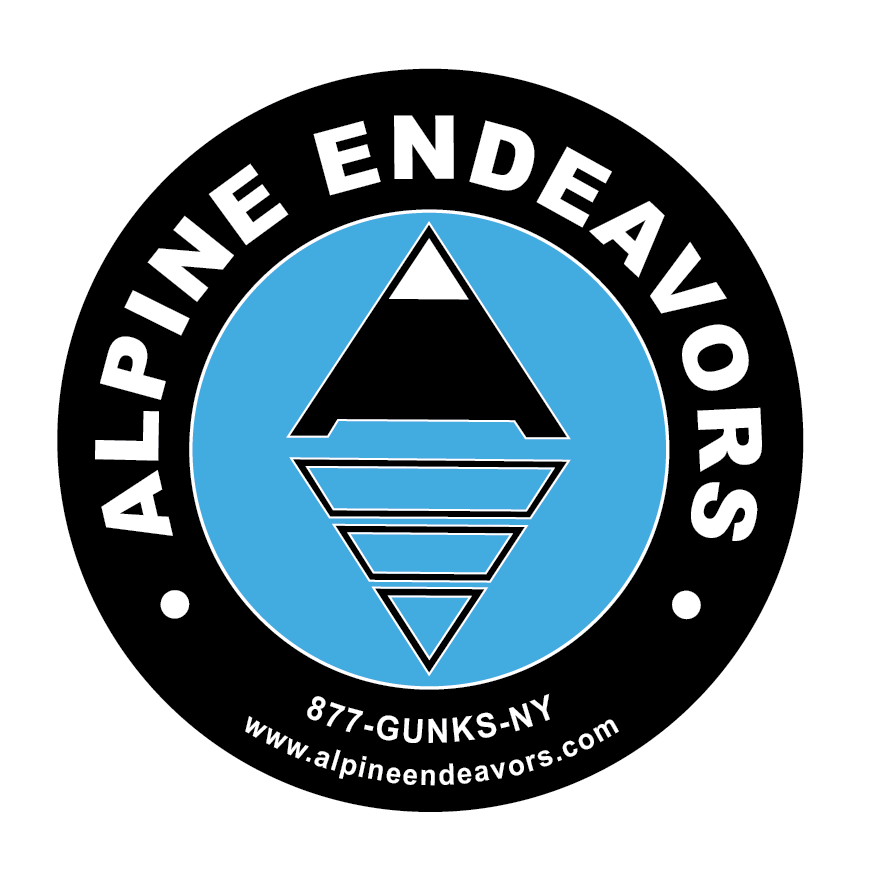FAQs
Here are some questions we get quite often. If you have any questions about your day please don't hesitate to ask.
How long is the day?
We offer both half-day and full-day outings in the Gunks.
Full-days 9am until 4pm.
Half-days run from 9am until 12:30pm, or 1:30pm to 5pm.
On weekdays, we can sometimes adjust the times to work with your schedule, however, we prefer to start the half-days earlier to be sure there is space at the park.
For ice climbing and other rock locations, we only offer full-days.
Where do we meet?
For climbs in the Shawangunks and/or Catskills. We meet at Rock and Snow, 44 Main St, New Paltz, NY 12561.
If you have all your own gear, and/or are interested in getting out earlier, we can arrange to meet you at a trailhead or park-n-ride. Just be sure to let us know so we can make the proper arrangements..
For directions, please visit our "driving directions" page.
What do I need to bring?
We supply all the technical equipment you will need to climb. You will need to bring:
lunch
at least 2 quarts of water
clothing comfortable for the weather
a pack to carry all your gear plus that which we loan you
odd's and ends; medications, sunscreen, bug spray, camera, etc.
For a complete gear list for each type of outing, please visit our Gear List page.
Can I bring my own gear?
If you have your own gear, please bring it. You will be more comfortable using gear you are familiar with. If you would like to borrow ours, you are welcome to do that as well.
What is the largest size group you can take climbing?
For most climbing, we keep the ratio at 4 climbers-to-1 guide, if you have more in your party, then we will provide another guide. We can accommodate groups of up to 30 people.
Is it customary to tip our guide?
This is definitely one of those uncomfortable questions to answer...
Guides often do receive gratuities. They are never expected, but greatly appreciated. As for the amount, that really varies with the client and the service they received. It is something you will have to decide after you are out that day.
How long does it take to learn to lead?
There is no definitive answer to that. If anyone tells you otherwise, think twice about their response.
Leading is an art form, and it requires an incredible amount of climbing experience - route finding, rope management, gear placement, anchor systems, climbing technique, rescue skills, stress management, decision making, etc. to be brought together all at once.
You need to have a good head on your shoulders, and it helps to be mechanically inclined. It ranges from person to person; some people can pick it up over a season, some people need a few years, some people may never be able to. The final decision is up to you, and you need to use your judgment. We suggest you have a good base of knowledge, be able to set up natural and artificial top ropes on your own, have followed a fair amount of lead climbs (preferably multi-pitch), and be comfortable when climbing.
What are some important things I can do in the winter to make my day of ice climbing more enjoyable?
Be sure to bring a thermos for the cold days in addition to your water. Try to avoid caffeinated drinks such as coffee. Caffeine is a vasoconstrictor - it will shrink your blood vessels, thus reducing the supply of blood to you extremities and make you colder. Plus it is a diuretic, and the increased frequency of you having to pee will make you dehydrated, which also makes you colder. Hot jello is a great winter drink!
Be sure to bring water bottle insulators (Outdoor Research makes a bottle parka) to keep your water from freezing, and place your bottle in the parka upside down (be sure the lid is on correctly). This will make any freezing that does occur at the actual bottom of the bottle, then you can flip it over and still be able to unscrew the lid.
Bring multiple pairs of gloves, and a pair of mittens. The ONE thing that will definitely get wet are your gloves. Cold hands are not fun, a good number of gloves is at least three (including your mittens).
Bring a warm parka/jacket to put on over your climbing jacket. That way when you are belaying, eating, waiting, etc you can stay warm.
Try to eliminate cotton from what you are wearing that day when out climbing, Definitely do not wear jeans.
I was at your site and was wondering how you dressed for really cold multi-pitch climbs. If you have too many layers, you sweat on the first lead. Then when your second comes up and then leads, you are sitting for a long time. If you don't have the layers on, you don't sweat as much but you are still sitting with little on for some time. How do you layer for this?
For multi-pitch routes, having a pack you can climb with is key. You can carry an ultralight pack in your big pack and use it while leading. While on lead, a good suggestion for normal dress is a synthetic tee shirt, long sleeve mid weight zip neck, fleece top and soft shell. Carrying warmer gloves inside your jacket around your kidneys (the harness over the jacket keeps them from falling out and being in there keep them warm). In the pack stuff your belay jacket, first aid kit, headlamp, and water or thermos. When you get to the belay, put on the jacket and swap out the gloves - putting the thinner pair worn inside your jacket to keeps them warm even though they are probably wet, and allows them to put them back on for the next pitch.
